
Dear readers, follow me in this walk around Tokyo as we retrace Godzilla’s path of destruction from the original 1954 film.
And don’t forget the other two Godzilla-themed stories, here and here.
Later, I will add an upscaled version of this post for paid subscribers with a detailed walk map.
Francois Truffaut’s haunting film The Woman Next Door ends with the narrator proposing an epitaph for the two doomed lovers: “Neither with you nor without you.” These words suit Godzilla’s tumultuous love affair with Tokyo to a T. Indeed, the undisputed king of Japanese kaiju (monsters) seems irresistibly attracted to Japan’s capital, only to smash it to pieces every time they are reunited.
Godzilla – and monster movies in general – also has a penchant for targeting the latest additions to the Tokyo cityscape: in 1961, for instance, Mothra’s giant larva bends and snaps the three-year-old Tokyo Tower in two before using it to build a cocoon in its ruins and turn into a fully formed vengeful moth. Also, the Yurakucho Mullion commercial complex opened in September 1984 only to be seriously damaged in The Return of Godzilla that was released just three months later.
Although each fan has his own favorite kaiju film, everybody agrees that the original Godzilla (1954) is one of the best. Therefore, this time I am guiding you on a tour of Tokyo landmarks that got the rough treatment when Big G first tramped around Japan’s capital.
Seventy years ago, Godzilla actually paid not one but two visits to Tokyo in the space of few days, and it is no coincidence that it first announced itself in the southern district of Shinagawa. Indeed, starting with the Edo period (1603-1867), this area was the southernmost entrance point to the city. At that time, the 514-km-long Tokaido road connected Tokyo (then called Edo) to Kyoto, and all travelers coming from the south had to pass through Shinagawa-juku (post town) to enter the shogunal capital.
Later, Shinagawa became the location of Japan’s oldest railway station. The country’s first line opened in 1872 between Yokohama and Shinbashi, some five kilometers north of Shinagawa but, because the opening of Shinbashi was delayed, Shinagawa was for about four months the line’s temporary Tokyo terminal. Even Godzilla seems to be aware of the place’s historical significance and about 60 years later, in Shin Godzilla (2016), it will more or less follow the same route to central Tokyo.
This walk starts a little south of Shinagawa Station, so if you are already in Tokyo, you should take the Yamanote line to Shinagawa, change to the Keikyu Main Line and get off at the first stop, Kita-Shinagawa. From there, we head north and the first hot spot we reach is Yatsuyama Bridge, Japan’s first railway overpass. Originally a wooden structure built in 1872, it was later replaced with an arched iron truss bridge. That’s the structure that Godzilla angrily grabs and destroys in the 1954 film. It was replaced in 1985 by the current light-green bridge (the fourth generation), a more modest version that is somewhat overshadowed by the railway truss bridge next to it. Together, they make a very nice pair.
By the way, although it is not obvious to the walker, the Yatsuyama area is located on a hill at the tip of the Musashi Plateau. Its name comes from the eight capes that once jutted out into Tokyo Bay. In the late 19th century, when Shinagawa Station was built, it was still located right next to the sea. However, by the time Godzilla arrived, land reclamation had pushed the coast eastward.

When the monster reaches Shinagawa, it first derails a train that is approaching the station but gets caught in high-tension wires, which makes it even angrier. It then proceeds to crush Yatsuyama Bridge and destroy Shinagawa Station before heading back to the bay.
If you venture inside Shinagawa Station and head to Platform 1, you will find a “0-km post and a tile featuring the words "Birthplace of the Railway – since 1885" and a picture of a dinosaur that is thought to be based on Godzilla. Those landmarks refer not to the older Shinbashi-Yokohama Line but to the Yamanote Line that was opened in that year. At that time, it was called Shinagawa Line, had not become a loop line yet, and Shinagawa was its southern terminal.
A few days later, Godzilla returns. This time, it lands in Shibaura. This area was developed between the late 19th and early 20th century as part of the Sumida River Mouth Improvement Project, which aimed to reclaim the shallow part of Tokyo Bay and create a port. In 1954, most of the area was comprised of commercial and industrial facilities such as factories, offices, and warehouses. However, it has been thoroughly gentrified and today it is home to the so-called kuchuzoku (air tribe) who enjoy a nice view of the canals from their high-rise condos.
After strolling around Shibaura and maybe checking out the Haneda Airport-bound monorail gliding over the water, let’s follow Godzilla across the Yamanote Line tracks. This time, Big G means business and starts to methodically burn the city with its radioactive breath, ravaging the Mita and Tamachi districts.
In the film, vehicle 215 reports to headquarters that “the fire is spreading out of control” and “Godzilla has breached defenses at Fudanotsuji, the 49th Tank Division has been wiped out, and no further action is possible.” Passing through the Fudanotsuji intersection on our northbound walk, we cannot but notice two huge, recently opened buildings, the Mita Twin Bldg. and Mita Garden City, which are respectively 179 and 215 meters tall. In 1954, they would have dwarfed Godzilla which at the time was only 50 meters tall.
The most notable victim in this area is Zojoji, a famous Buddhist temple that was also featured in the superhero film The Wolverine (2013). Visitors like to photograph the main hall with the Tokyo Tower in the background – a typical old/new Tokyo pairing – though in 1954 construction of the tower was still three years away.
At this point in the story, nothing can stop Godzilla’s march through Tokyo. The authorities have realized that conventional weapons are useless and decide instead to focus on limiting damages. After passing through Shinbashi, the monster reaches Ginza, and the world-famous upscale shopping district gets the royal treatment. Its first prominent victim is Matsuzakaya, a popular department store that, when it opened in 1924, had the distinction of being the first to allow customers to enter with their shoes on.
Immediately after World War II, the Special Comfort Facilities Association turned its basement into a dance hall. Called Oasis of Ginza, it was specifically designed to entertain the occupying forces and was off-limits to the Japanese. That may be one of the reasons for Godzilla’s rage toward it.
Matsuzakaya, by the way, is no more. Due to age and deterioration, the building was torn down in 2013 and redeveloped into an even bigger commercial complex, GINZA SIX, with 13 floors above ground and 6 below.
Ginza’s most famous landmark is Wako, a store specializing in watches and jewelry. The original shop was built in 1894, but Godzilla attacks the new one. Completed in 1932, it stands out for its art deco style, curved granite façade, and clock tower. It is one of the few buildings in Ginza spared by the air raids, so after the war it was naturally requisitioned by the Allies and used as the Tokyo PX store until the end of the occupation in 1952. Then, in the same year Godzilla was made, Wako’s clock tower began to play the famous Westminster chimes.
America, England… I guess the shop had too many connections to recent war enemies. At 11:00 p.m., the clock strikes the hour, and the monster, annoyed by its sound, destroys the tower, sending large chucks down on a group of police officers hiding in a subway entrance (either A9 or A10).
Wako is too good a target to be left alone by visiting monsters. In fact, it was wrecked by Godzilla three more times so far: in Godzilla vs. Destroyah (1995), Shin Godzilla (2016) and Godzilla Minus One (2023), while in another popular disaster film, Japan Sinks (2006) the whole area is submerged.
But enough of Ginza, Godzilla is not finished yet. Suddenly changing course and veering to the left, it crosses – and in the process destroys – Sukiya Bridge, then advances toward the Nagatacho district (the center of Japan’s political power) and its biggest prey, the National Diet Building, in the process turning Tokyo into “a sea of flames” – and reminding viewers at the time of the Tokyo Air Raid of March 1945.
While Machiko declares that only the appearance of the Sukiya Bridge will be always the same, real life was not so kind: in 1957, three years after her happy reconciliation with Haruki and her painful past, the Sukiya Bridge was demolished for an expansion of the subway system. Then, in 1960, the Metropolitan Expressway Public Corporation completed construction of an expressway over the spot where Sukiya Bridge used to stand.
In 1954, audiences reportedly cheered Godzilla on when it trampled one of the Diet’s wings (the House of Councilors). When the film was released, the Diet was in turmoil due to a shipbuilding scandal. Also, many Japanese opposed the Treaty of Mutual Cooperation and Security between their country and the United States that was being discussed in those days.
The National Diet was first built in 1890, but the current building (the one featured in the film; a hybrid of Western and Asian styles) was only completed in 1936. Godzilla has always had a certain anarchist, anti-establishment streak, and more than once has delightfully destroyed centers of power, most notably in Godzilla: Tokyo S.O.S. (2003) when the entire Diet tower was demolished during the epic battle between Godzilla and Mechagodzilla.
You can visit the building on weekdays. The tour takes about one hour. The reception desk for visitors is located next to the Annex of the House of Councilors. Look for the "Tours of the House of Councilors: Entrance" signboard.
We are nearing the end of our tour. In the film, Godzilla is shown passing through Hirakawacho where, either disturbed by the radio waves that had being transmitted or more simply, attracted by the tall new construction, it destroys the NHK radio tower that had been built the previous year. However, there is nothing left to see today because the tower was dismantled a long ago, so we can head to Nagatacho Station and take the subway home.
The walk should take about 2.5 hours (not including stops for photo sessions, eating, resting, etc.)
Godzilla, however, does not stop in Hirakawacho: in the film, we hear the radio reporting that skirting the moat of the Imperial Palace clockwise, the monster heads north toward Akihabara, Ueno and Asakusa. From there, it follows the Sumida River, heading south where it had come from. If you find yourself in Asakusa and want to follow the last leg of Godzilla’s “stroll” around Tokyo, you can ride one of the boats that cruise the Sumida River downstream.
This route takes you under 12 bridges. The most important of them (at least for Godzilla fans) is Kachidoki Bridge. This is the last bridge before the river flows into Tokyo Bay, and the very last victim of the monster’s fury, having the misfortune of finding itself in his path. Once in the bay, Godzilla is attacked by jet planes but their rockets simply bounce off its tough scaly skin while the monster finally dives and heads to the open sea.
Kachidoki is a movable bridge, but due to a decrease in ships traveling on the Sumida River, it has not been opened since the end of 1970. Inoue Yasuyuki, a member of the special effects team on Godzilla, said that the bridge was supposed to be flipped over by the monster, so they had to meticulously craft even its underside. However, the bridge only opened two or three times a day, so they had to wait patiently until they could take some photos. Later, they were able to obtain the blueprints for the Kachidoki Bridge from the construction company.
In 1962, Kachidoki Bridge appeared again, this time in the climax of the Toho science fiction disaster film Gorath, produced by the same team of director Honda Ishiro and special effects director Tsuburaya Eiji. As Gorath approaches, it creates a tidal wave and the bridge is swallowed up by the backflowing waters from Tokyo Bay.
Most people who join the Sumida River cruise don’t go farther than Hamarikyu Garden or Hinode Pier. However, if you want, you can cross Tokyo Bay and continue to Odaiba, the artificial island our favorite monster visited in Godzilla vs. Megaguirus (2000). And if you want to add a touch of class to your otaku cruise you can skip the usual water buses and opt instead for Himiko or Hotaluna, the two spaceship-like boats designed by famous manga artist Matsumoto Leiji.
A noteworthy thing about the original Godzilla is that the monster destroys only the prosperous downtown that has been so quick to erase traces of the war. This trend, as shown above, has been a constant throughout the series, with the monster taking particular pleasure in annihilating Tokyo’s latest landmarks.
On the other hand, Godzilla leaves alone the residence of the emperor who had been instrumental in first leading Japan to war and then repressing war memories after the conflict. Since the United States refrained from bombing the Imperial Palace, one could say that it makes sense that even Godzilla, as a proxy for the United States, spares the place. After all, the emperor was needed by both the American government and his own people to heal the past wounds.
A final tip before you embark on this tour: you may want to walk after dark. After all, both in the 1954 film and its first sequel, Godzilla Raids Again (1955), Godzilla attacks only during the night. Both films were shot in black and white, adding to the impressive dark look and mood of those works. But whatever time of day you choose, it will be an opportunity to see Tokyo from another perspective.

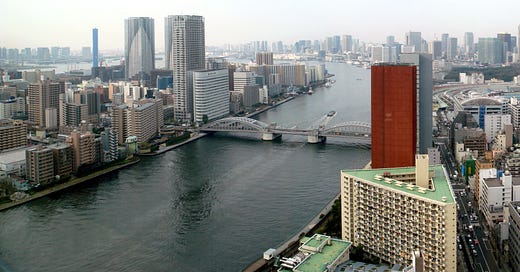


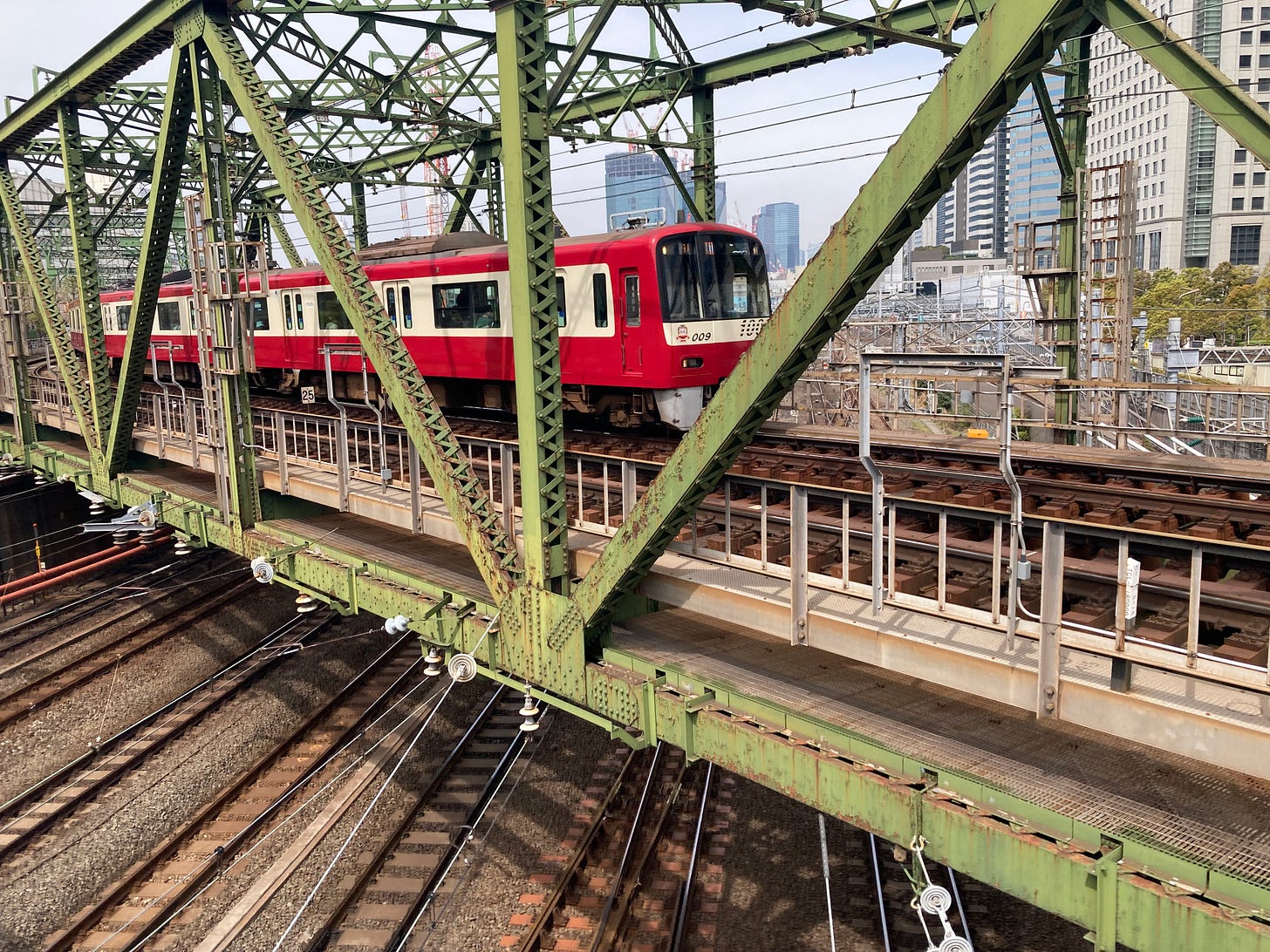
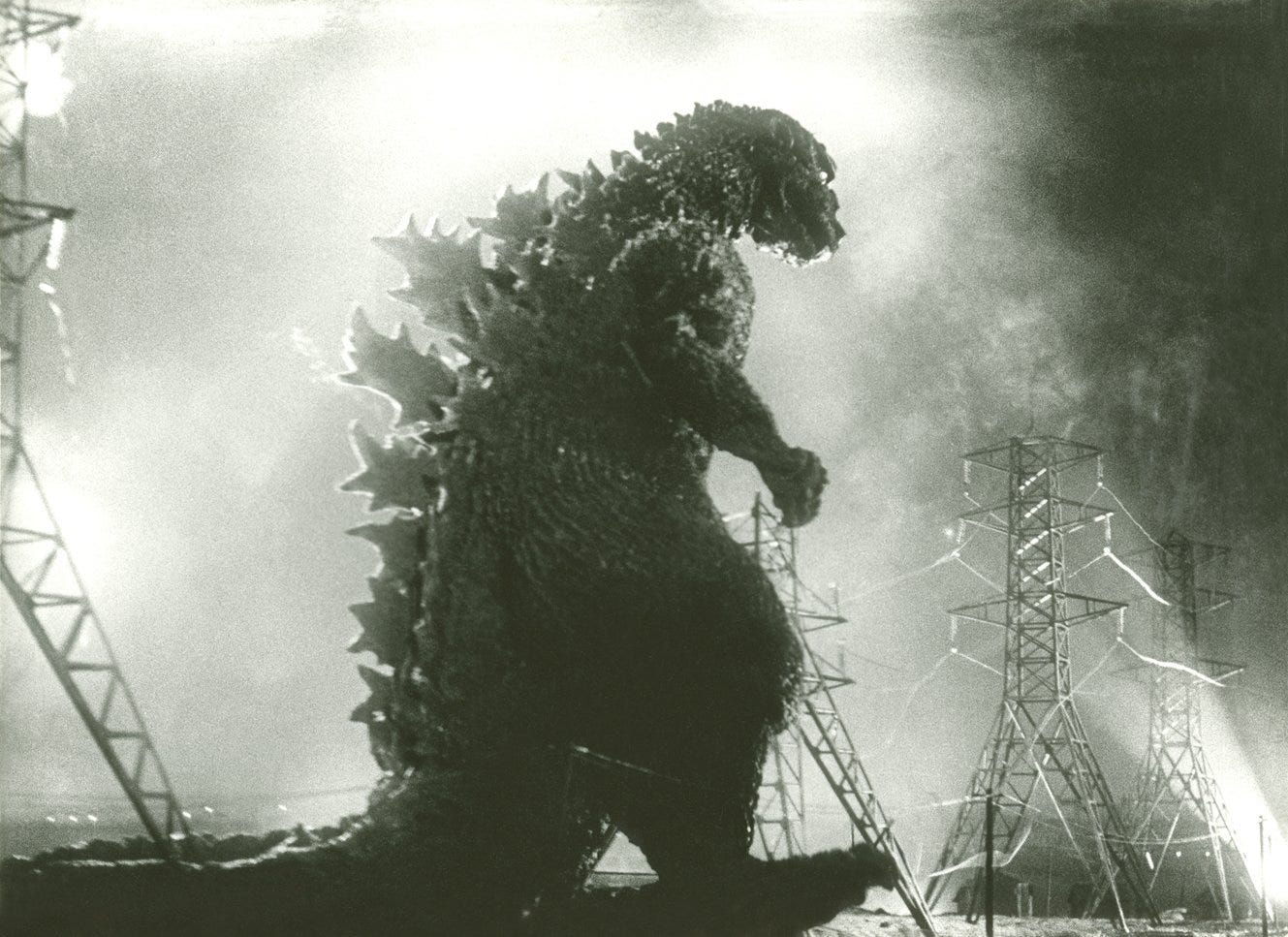

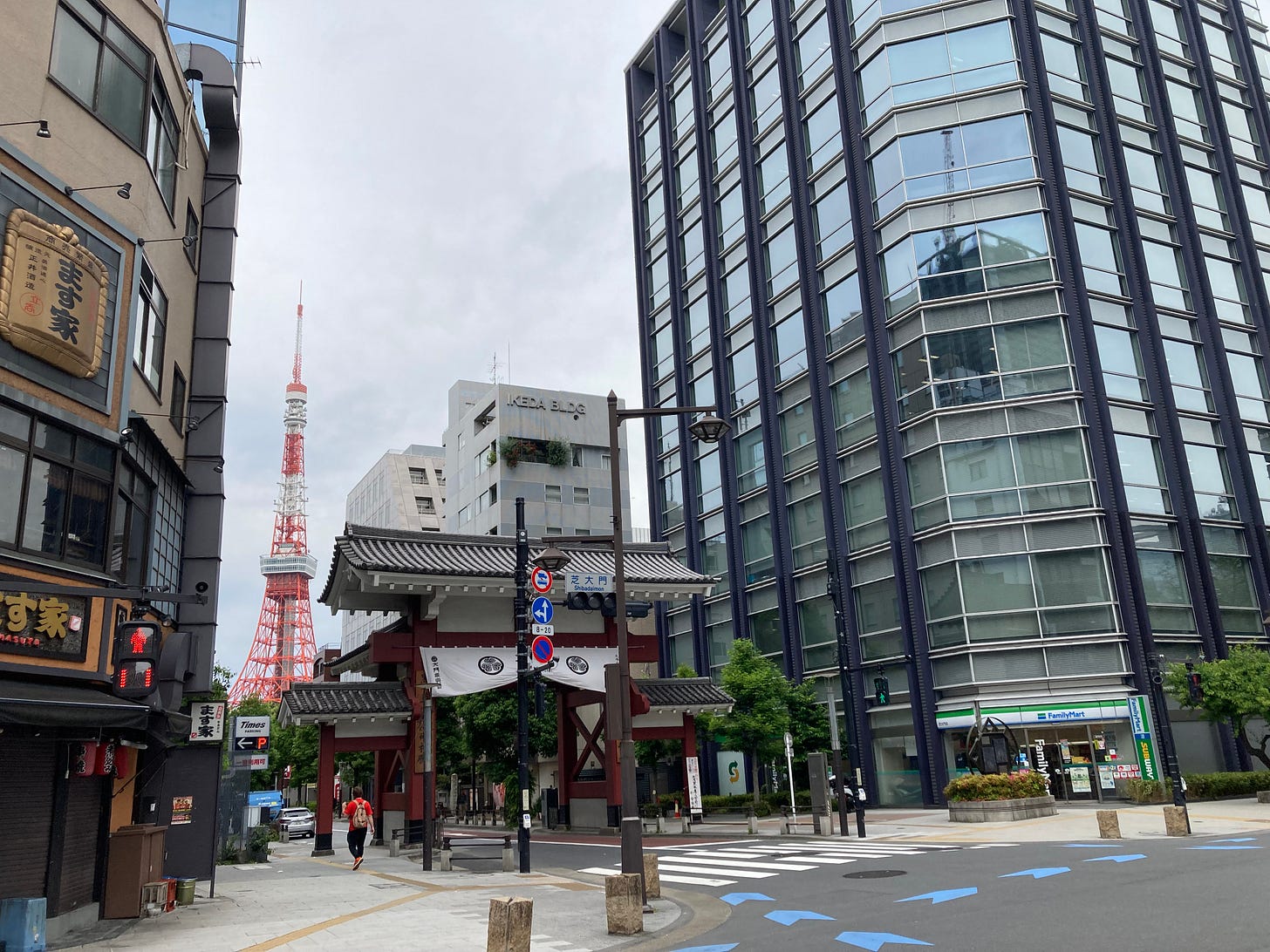
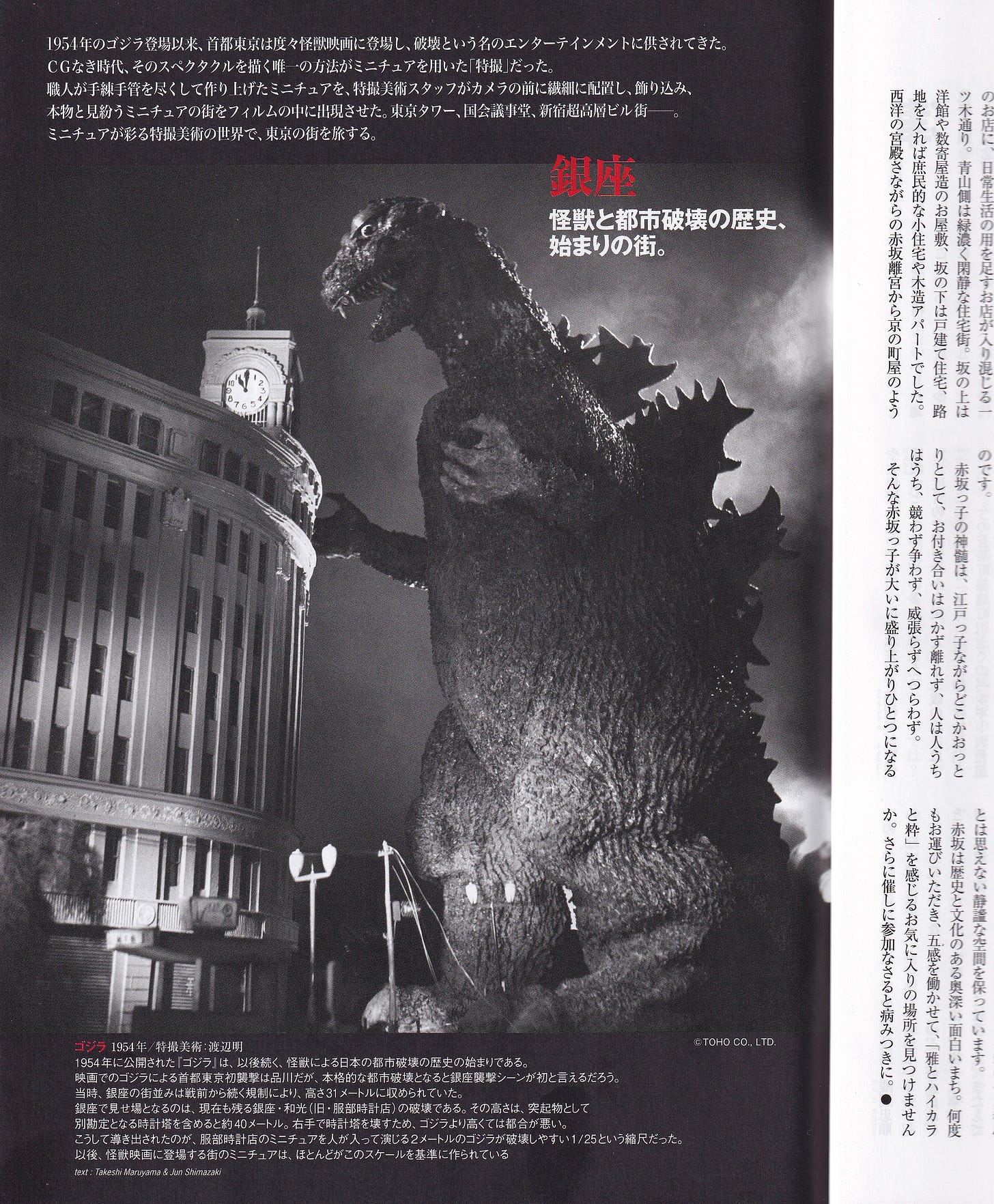

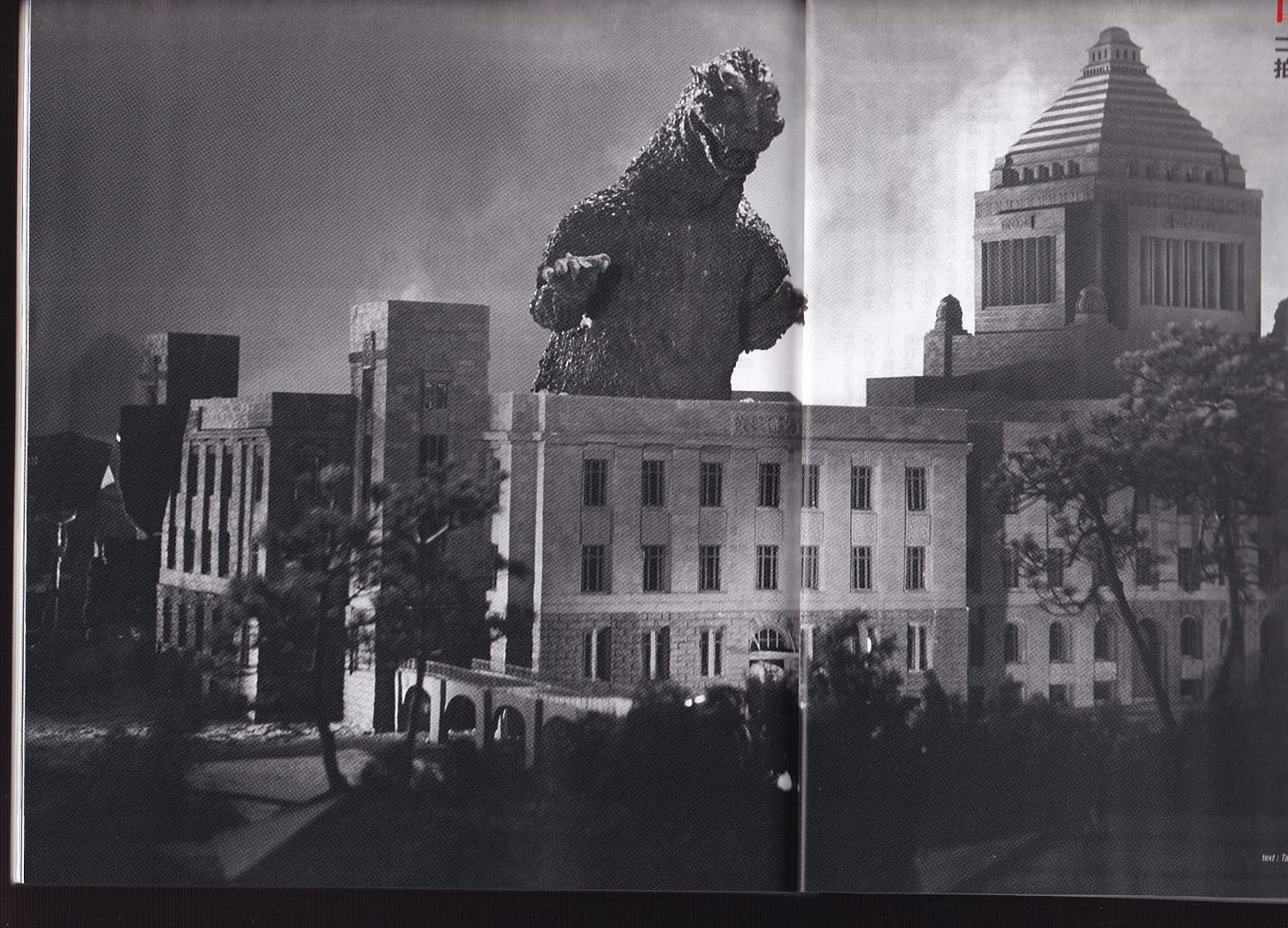

'National Diet Building' always kills me. Trust Godzilla to ruin the Diet.
This is a fantastic tour, Gianni. I'm in awe of your knowledge and I love the way you loop in the historical perspective relating to Godzilla's path of rampage. Brilliant.